In the search for a future where human living spaces are in harmony with nature, the concept of sustainable communities is no longer a far-off dream. It is becoming a reality. One example that demonstrates this vision is Centre Parcs Paris Village Nature, where nature, human-scale living, and smart design work together to create a sustainable, balanced environment. This model offers valuable lessons on how to build communities that respect the planet, and it shows that sustainability is about more than just technology—it’s about the way we plan, design, and live.
Cluster Planning: A Blueprint for Sustainable Communities
A sustainable community, like a well-balanced ecosystem, thrives when every part is connected. Instead of isolated buildings scattered without thought, Centre Parcs uses a method called cluster planning—an approach where homes, green spaces, and public areas are close together, so people can walk or cycle to where they need to go. This reduces reliance on cars and encourages a sense of belonging, as everything is within easy reach. The aim is to create a village-like feel, where people can live sustainably without compromising on comfort or enjoyment.
The Centre Parcs model emphasises the human scale. It’s not about towering buildings or long stretches of concrete, but about creating spaces that feel comfortable and intimate. Every part of the community is designed for easy access, so people can move around without hassle, encouraging interaction with nature and each other.
The Circular Economy: Closing the Loop on Waste
One of the most important elements of sustainable living is managing resources carefully. Centre Parcs incorporates many circular economy principles, where materials and resources are used wisely and waste is reused instead of thrown away. The community already has systems for recycling and managing water, but there’s still room for improvement. For example, introducing vacuum toilets could reduce water usage and separate urine from faeces, allowing valuable nutrients like phosphorus to be reclaimed and used as fertiliser. This would close the waste loop, turning what would have been discarded into something useful.
Centre Parcs also embraces urban farming—growing food right within the community, albeit on a small, prototype scale. This helps reduce the carbon footprint of food production and transportation, while also providing fresh, local produce for the residents. By growing food in the community, the need to rely on large-scale farming far away is reduced, and more sustainable food systems are created.
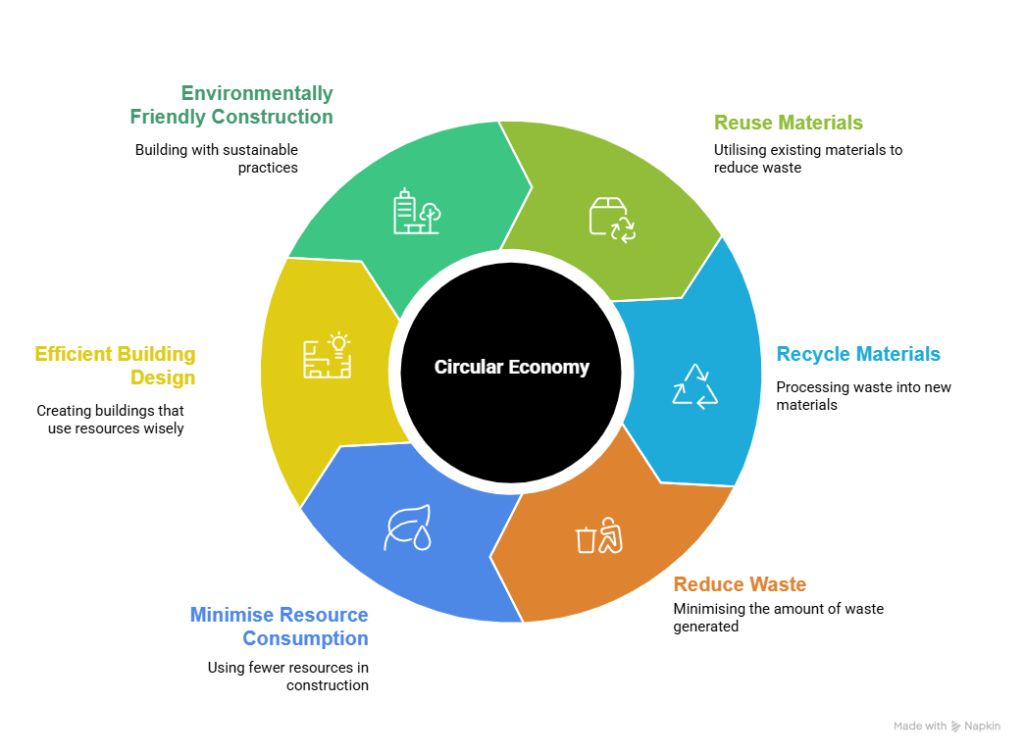
Public Spaces: Prioritising People over Infrastructure
Public spaces are the heart of any community. In Centre Parcs, great thought has been given to the spaces where people can meet, relax, and socialise. This is where Jan Gehl’s philosophy on urban life comes into play: places are designed with people in mind, not cars. The development includes parks, playgrounds, and open spaces, all designed to encourage social interaction, physical activity, and a connection to nature.
With Green Space Infrastructure (GSI) as a core principle, the village ensures that nature isn’t just an afterthought, but a central part of everyday life. GSI means that green areas—like parks, gardens, and trees—are integrated into the design of the built environment. In Centre Parcs, these spaces are a place for both relaxation and recreation, where nature is celebrated and enjoyed by everyone.
Centre Parcs also keeps the design human-scale by maintaining a low floor space index (FSI). The FSI is a measure of how tall a building development can be. A lower FSI, such as 0.75, ensures that buildings don’t rise to overly prodigious heights, just as the ground space index (another GSI) of less than 1 means osme land is not built on, leaving plenty of space for green areas. This kind of design helps ensure that the community doesn’t feel cramped or overcrowded, and that nature can still thrive alongside human life.
Case Study 1: Centre Parcs Paris Village Nature, France
The Centre Parcs Paris Village Nature is a perfect example of how integrated planning can create a sustainable, enjoyable community. It operates on net-zero emissions, using renewable energy sources like solar power, biomass, and other green technologies to reduce its carbon footprint. The village’s design promotes walking and cycling, while its waste management and water recycling systems are key elements of its sustainability efforts.

© Center Parcs
Urban farming is also part of the plan, with food grown within the village to reduce environmental impact. The entire project is a model for how sustainable living can be both practical and enjoyable, and it serves as a roadmap for future developments that aim to balance human life with nature.
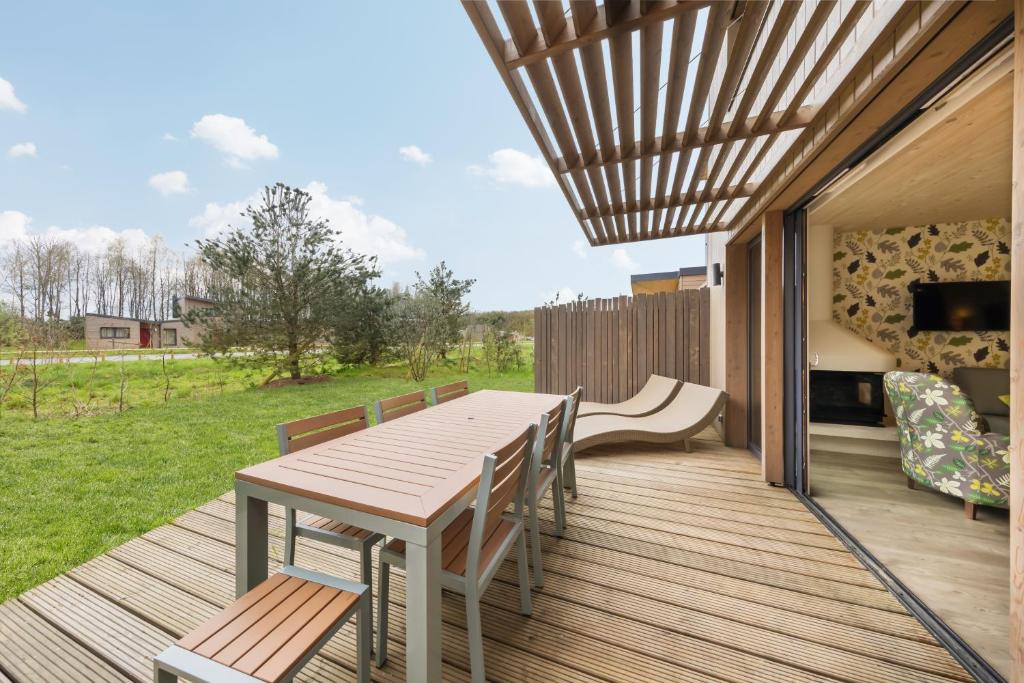
© Center Parcs
Case Study 2: De Ceuvel, Netherlands
In Amsterdam, the De Ceuvel project offers a glimpse into the future of sustainable urban living. What was once a polluted industrial site has now been transformed into a thriving, eco-friendly neighbourhood. De Ceuvel is powered by renewable energy, uses waterless toilets, and features urban farming. It also has green spaces that allow the community to connect with nature. People can cycle or walk everywhere, and the design encourages social interactions and collaboration.
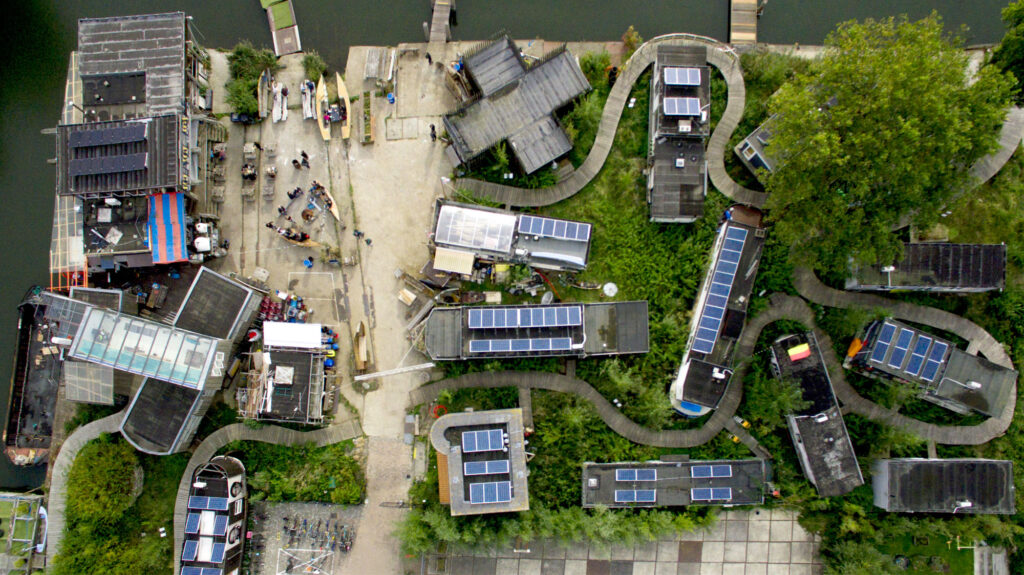
© landezine.com
De Ceuvel’s success shows how urban environments can be revitalised and transformed into sustainable, human-scale communities. The project is a testament to the power of thoughtful design and the role that sustainability can play in urban regeneration.
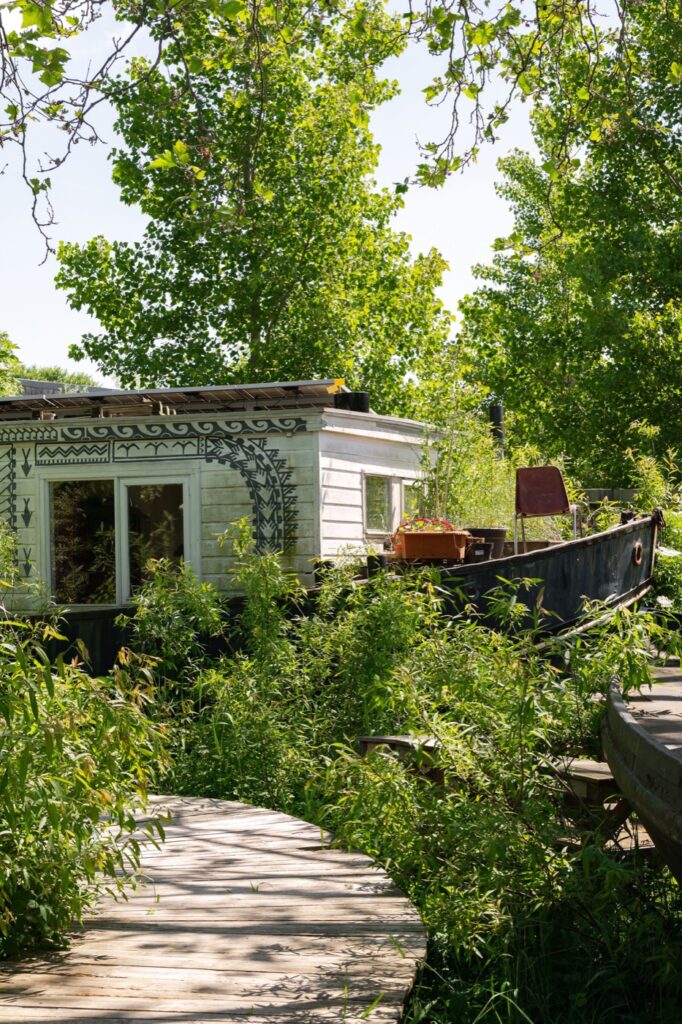
© landezine.com
Case Study 3: Hammarby Sjöstad, Sweden
Hammarby Sjöstad in Stockholm is another great example of sustainable urban planning in a once polluted urban space. Built along a waterfront, this district integrates renewable energy, water recycling systems, and waste-to-energy technologies to reduce its environmental footprint. Like the other examples, Hammarby Sjöstad prioritises sustainable mobility, with cycling paths, pedestrian walkways, and a highly efficient public transport system. The development also focuses on minimising water usage and pollution through smart technology.

© atelier GROENBLAUW, Madeleine d’Ersu
Hammarby Sjöstad shows how sustainable urban development can be achieved in densely populated areas without sacrificing the environment. The neighbourhood has proven that it’s possible to create a thriving, sustainable city that reduces waste and promotes greener living.
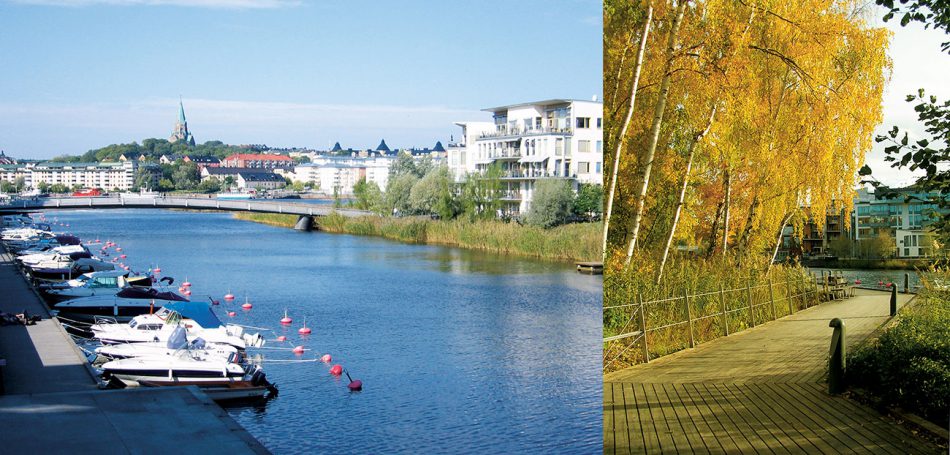
© Malena Karlsson / Jonathan Perrin
Could Bamboo Play a Role in These Sustainable Communities?
While none of the projects mentioned above currently make significant use of bamboo, this versatile material could play a vital role in further improving their sustainability. Bamboo is fast-growing, strong, and highly effective at sequestering carbon, making it a sustainable choice for construction and other uses. Here are a few ways bamboo could help:
- Ecological Filtration: Bamboo is well-known for its ability to filter and purify water. Its extensive root systems help reduce soil erosion and improve water quality by naturally filtering out impurities. In urban environments like Centre Parcs or De Ceuvel, bamboo could be used in ecological filtration systems, helping to treat wastewater and improve the health of water bodies in the community.
- Building Material: Bamboo is incredibly strong and lightweight, making it a great alternative to traditional building materials like steel and concrete. In combination with other local materials, bamboo can be used in construction to reduce the carbon footprint of buildings while maintaining structural integrity. Whether used for scaffolding, flooring, or even walls, bamboo’s strength and sustainability make it a material that could easily complement existing sustainable design strategies.
- Land Restoration: Bamboo could also be used in urban farming and land restoration efforts. Its rapid growth makes it ideal for rebuilding degraded land, improving soil quality, and providing both food and materials for local communities.
Conclusion: Building for a Sustainable Future
The Centre Parcs model, along with the examples from the Netherlands and Sweden, illustrates how sustainable communities can be created by carefully considering design, waste management, mobility, and energy use. These developments show that sustainability isn’t just a choice—it’s the future of urban living.
Bamboo, while not yet a key material in these communities, offers incredible potential. From water filtration to construction and land restoration, bamboo could play a major role in making sustainable communities even more environmentally friendly. By continuing to embrace sustainability in all aspects of design, we can create spaces that are not only good for the planet but also good for the people who live in them. The lessons from Centre Parcs and its global counterparts offer a hopeful vision for how we can all live in harmony with the earth, now and in the future.
Human-Centred Streets: The Proven Way to Reclaim African Urban Sociability
Every city tells a story through its streets. They reveal how people live, how they…
Biophilic Design: The Proven Way to Shape Sustainable African Communities
A city breathes when its architecture remembers nature. Too often, our modern buildings forget this….
Open-Source Urbanism: The Proven Way to Empower African City Builders
Urban design cannot succeed if knowledge remains locked behind bureaucracy. The tools of planning must…
The Just Transition: The Proven Way to Empower Local Builders and Communities
The question of equity in green building is not academic. It is moral, environmental, and…
Nature-Led Design: The Proven Way to Reclaim African Urban Spaces
Cities breathe best when nature is not a guest but a resident. Across West and…
Green Transport: The Proven Way to Power Africa’s Bamboo Cities
Transport shapes how we live, connect, and experience our cities. Yet, in much of West…
One Response